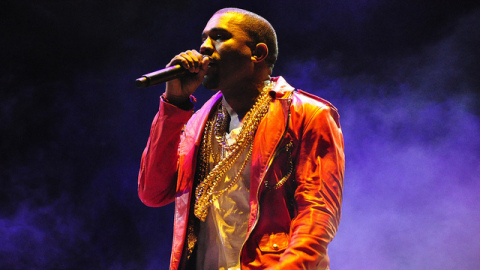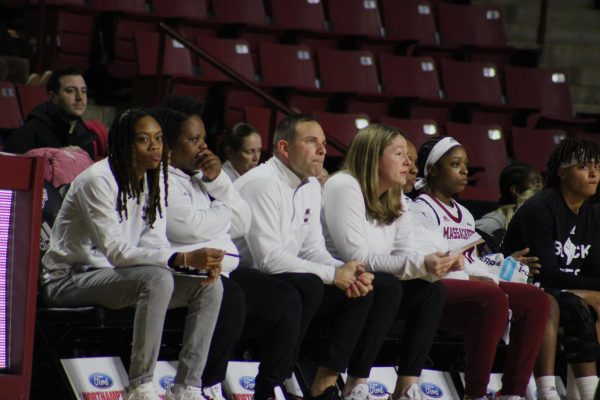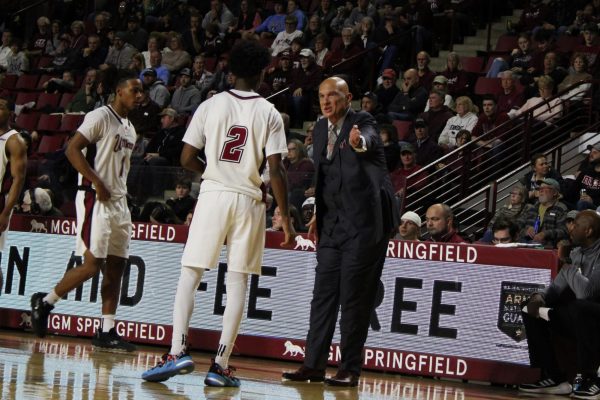Kanye West sets trends and experiments with hip hop art form

(Rodrigo Ferrari/Flickr)
By this point in his career, Kanye West is no stranger to controversy. The hip hop giant stirred the pot again at the 2014 Bonnaroo Music Festival after he went into his trademark rants and proclaimed that he was “chasing John Lennon, chasing Henry Ford, and chasing Steve Jobs.”
For most artists, this would be a laughable claim, but for West, it’s not so far-fetched. The Chicago rapper has had a stranglehold over hip hop and mainstream music for the past decade, and since the release of his debut album, “The College Dropout,” West has been at the forefront of nearly every stylistic movement in hip hop. His influence on popular music has rivaled that of The Beatles and Michael Jackson.
It was on “The College Dropout” that West changed the direction of hip hop. Prior to “Dropout,” gangsta rap was the sound en vogue with rappers such as 50 Cent, Ja Rule and the group Dipset popularizing abrasive, and gruff rhymes about crime and murder. West was able reintroduce soul samples and create a smoother sound in hip hop. Continuing on his next album, “Late Registration,” West pushed the soul and gospel sounds that artists such as Common, Mos Def, and even Cam’ron of Dipset adopted.
What sets West apart from most artists is his ability to evolve and change his sound with each album. His third album, “Graduation,” marked the first evolution in West’s sound in which he implemented electronic samples in his production. The change came about due to West’s immense popularity and the need for more arena-sized anthems in his set list. In a shocking move at the time, he sampled one of the most famous electronic dance songs of the time “Harder, Better, Faster, Stronger.” With the rise of EDM today, this would seem like a logical step for an artist to take, but before “Graduation,” few hip hop artists in the mainstream had experimented with electronic music.
From there, West continued expansion with “808’s And Heartbreaks.” Inspired by a collaboration with popular artist T-Pain on the song “Good Life,” he incorporated auto-tune, a sound made famous by T-Pain, into his music. While T-Pain used auto-tune primarily for creating fun, club songs, West took the method in the other direction and focused entirely on heartbreaking songs drawing from the pain of his own breakup with model Amber Rose. The album was not well received by classic Kanye West fans yearning for his more traditional hip hop sound. Nevertheless, it was an instrumental step in changing the sound of modern hip hop. This idea of singing over hip hop beats is now the norm with artists such as Kid Cudi, Drake and The Weeknd all drawing from this fusion that West popularized on “Heartbreaks”.
By the time “Heartbreaks” dropped, West had firmly established himself as a music superstar, with few contenders. Naturally, West translated this power into his fifth album, “My Beautiful Dark Twisted Fantasy,” including a first single actually titled “Power”. “Fantasy” and its successor “Watch the Throne” once again featured a shift in West sound and mood. Both albums featured bombastic anthems on success and luxury, African drum rhythms and the same mellow crooning in “808 And Heartbreaks.” While those concepts have been prevalent in hip hop before, West boastfully claims re-inspired other successful rappers such as Rick Ross, Lil Wayne, and Drake to try and challenge West’s throne and boast of their own successes in powerful rap anthems.
After reveling in operatic anthems, West changed his focus once again from the sounds of the mainstream to the underground. Unlike “Heartbreaks” and “Fantasy,” where he took popular sounds and themes from the mainstream and personalized them, West’s seventh LP, “Yeezus,” featured dark, grimy sounds from lesser-known artists such as Death Grips and TNGHT. The message in Yeezus was similar to “Watch the Throne,” in that West viewed himself as a musical god, yet the approach could not have been more different. Yeezus features a mix of electronic, trap and soul sounds and at times sounds minimal and cacophonous. The lyrics and mood of the project are also more aggressive in comparison to the softer, melancholy tones of “Heartbreaks.” The albums almost sounds like the works of two entirely different artists.
The effects of this new sound on the hip hop community remain to be seen, however. With every West project, there has been a noticeable change in the sounds of other hip hop artists who have tried to mirror his work. But it seems no one in mainstream hip hop has had the confidence or will to go as far as West has with “Yeezus.” This may be because West’s new sound is so far from traditional hip hop that few artists can afford to risk such a change.
He can take that risk because he’s one of music’s elite artists. But the cost may be that his influence on other hip hop artists’ sounds may wane. Going forward, it will be interesting to see how far Kanye West is willing to take his own sound and how far hip hop is willing to follow him.
Marcello Rossetti can be reached at [email protected]










